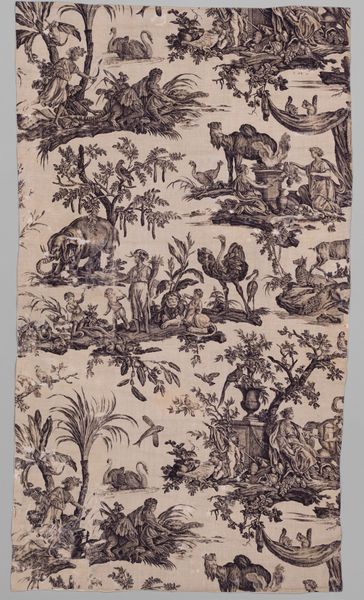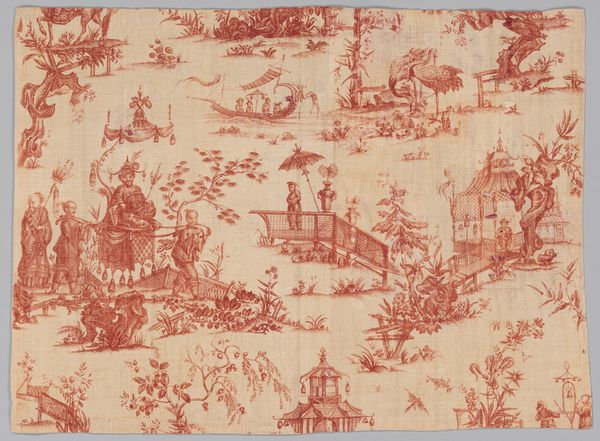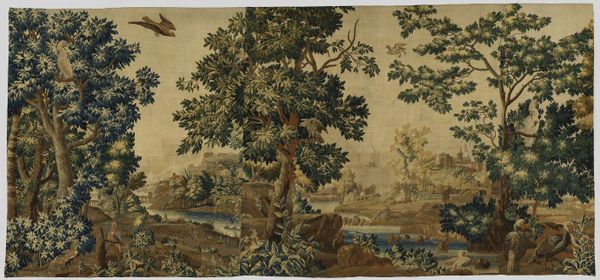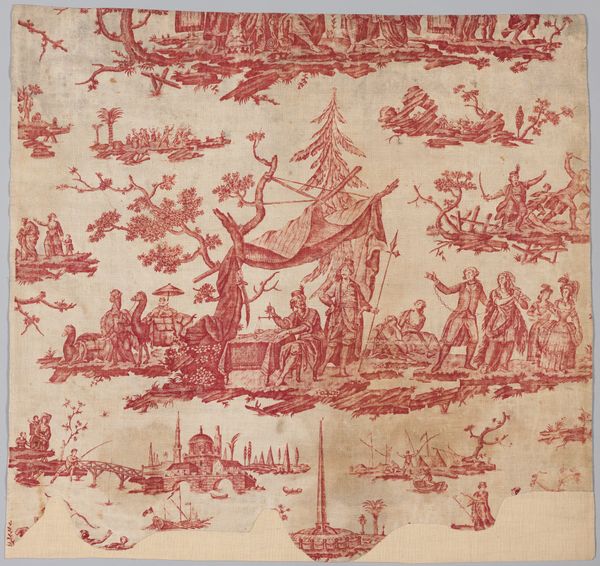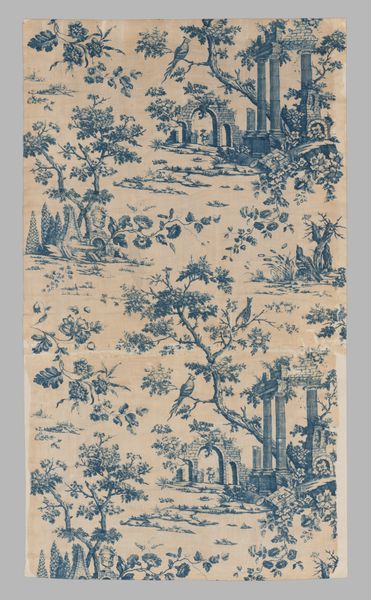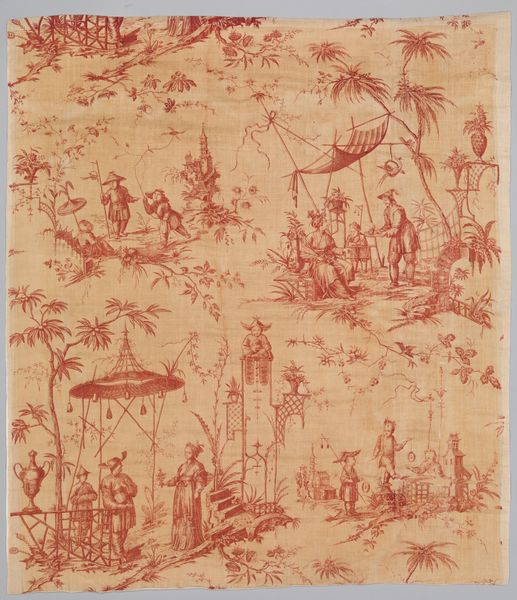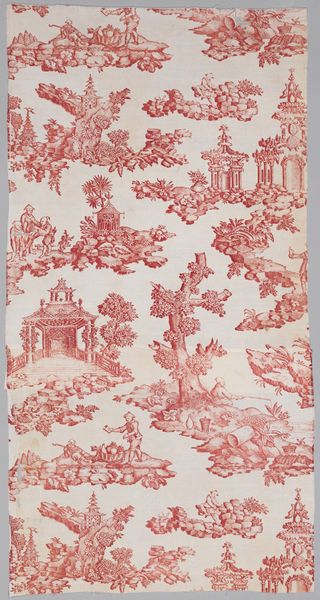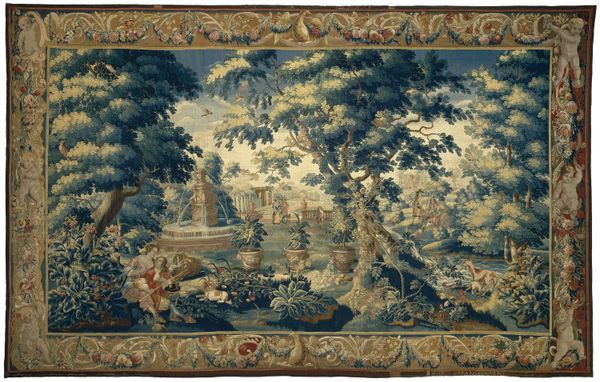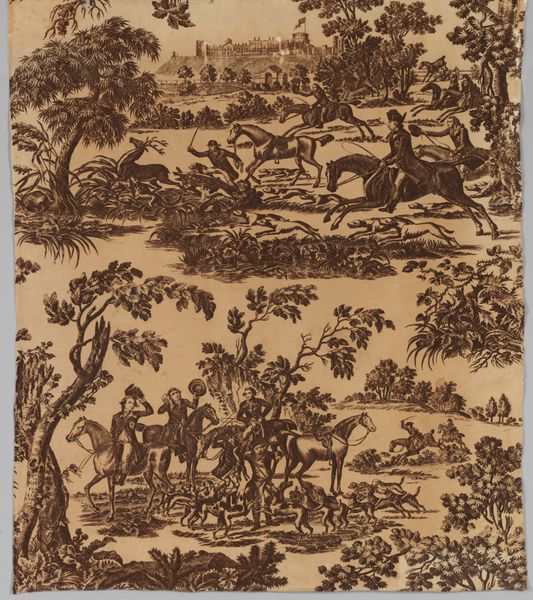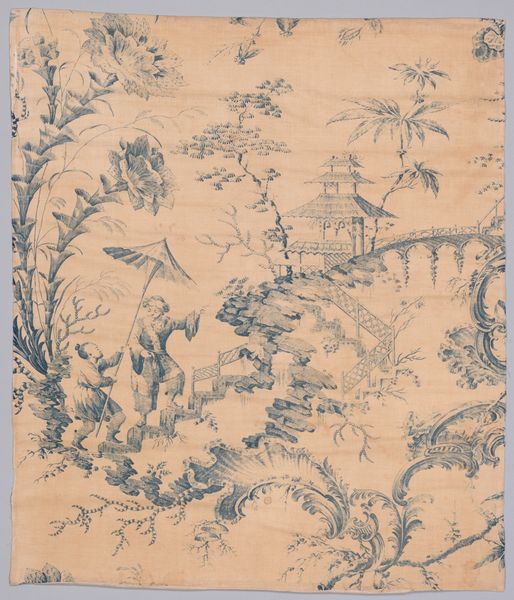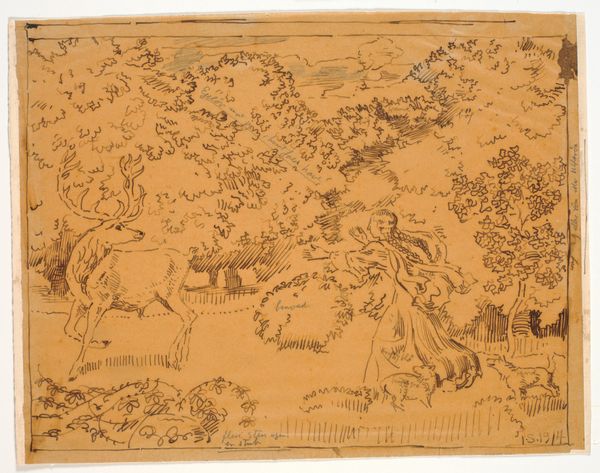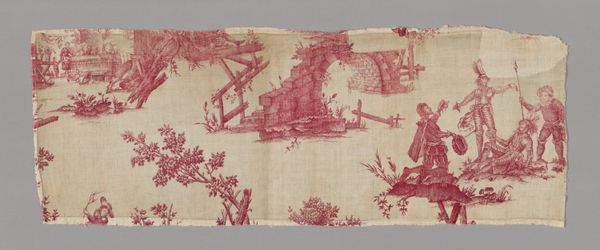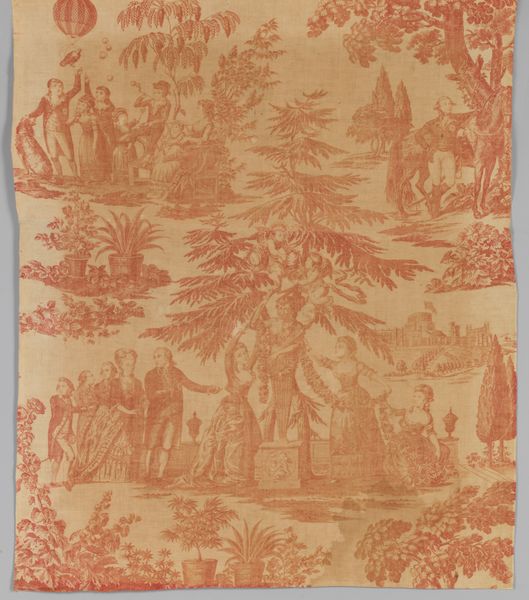
print, etching, textile
# print
#
etching
#
asian-art
#
landscape
#
textile
#
figuration
#
folk-art
#
orientalism
#
decorative-art
Dimensions: L. 20 1/2 x W. 27 3/4 inches (loom width) 52.1 x 70.5 cm
Copyright: Public Domain
Editor: This artwork, called "Piece," dates back to between 1755 and 1775. It's currently at the Metropolitan Museum of Art. It looks like a printed textile, maybe using etching to create the design? The scene almost feels like a park or garden scene from a distant land with pagodas, figures in leisure, a man on horseback, and a hunter taking aim. How do you interpret this work? Art Historian: What strikes me immediately is the complex interplay between labor, materiality, and consumption within this decorative art piece. Considering the materials, a textile print made with etching, it prompts several questions: Where was this textile produced, and under what labor conditions? Was it handmade, or machine-printed? Who was the target market for this style of textile, with its obvious fascination with "the Orient," and what social functions might it have served? Editor: I hadn't considered those aspects. It seemed so focused on just portraying a specific place. Art Historian: The "Orientalist" style reflects a European fascination with, and often a misinterpretation of, Asian cultures. Who was consuming these images, and what power dynamics were at play? Thinking about the print medium too: its repeatability meant images could reach a wider audience, thus shaping popular ideas, for instance. Editor: That makes a lot of sense. So, by examining the textile itself, and how it was made, we can learn about global trade, colonialism, and even the artistic techniques. Art Historian: Precisely! It challenges the traditional high art versus craft division, highlighting the material realities behind the creation and consumption of this object, and opening paths to better appreciate our place in art and cultural history. Editor: Thanks! I hadn’t thought about it that way, but looking at the process behind the piece gives a much wider understanding.
Comments
No comments
Be the first to comment and join the conversation on the ultimate creative platform.

